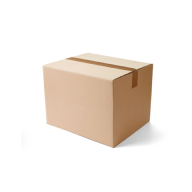DuPont Tyvek 800 J
5.0 / 5



Product description
The product description has not been specified
Indicates the intended fit and sizing category, ensuring proper proportions and comfort for different body types.
Disposable design offers fresh, clean protection for every task, saving you time and eliminating cleanup.
An integrated hood offers complete head protection, shielding you from dust, debris, and splashes for enhanced comfort and safety on the job.
Determines how the waist area fits and adjusts, affecting comfort and security of the coveralls during movement and work activities.
Elastic provides a flexible, comfortable fit that adapts to your movements, ensuring all-day comfort and freedom.
Zippers provide fast, secure closure, keeping you protected and making wear effortless.
Determines how closely the overalls follow your body shape, affecting comfort, range of motion, and ability to layer clothing underneath.
The exterior color of the overalls, affecting visibility, professional appearance, and compliance with workplace safety requirements.
The method used to join fabric pieces together, affecting durability, protection level, and resistance to wear and tear during demanding work conditions.
About Disposable Coverall
Disposable Coveralls provide full-body protection against contaminants, dust, and hazardous materials in a convenient single-use design. Featuring integrated hoods and secure closures, these lightweight suits offer essential coverage for healthcare, industrial, and laboratory environments while allowing comfortable movement during tasks.
Standards and labels
Chemical protective clothing with the EN 17491-4 rating is tested for its resistance to penetration by sprays of liquid chemicals. This means the clothing helps protect you from liquid chemical splashes and sprays, offering enhanced safety in environments where such exposure is a risk.
Protective clothing and medical barrier materials with the EN 22612 rating are tested for resistance to dry microbial penetration. This means the material effectively blocks bacteria-carrying particles, helping to prevent the spread of germs and protect the wearer or patient from infection.
Products made from rubber or plastics-coated fabrics, like waterproof clothing or bags, with the EN 7854 rating are tested for their resistance to damage from repeated flexing. This helps ensure the material remains durable and maintains its integrity through frequent bending and creasing, offering you a longer-lasting product.
Nonwoven products with the EN 9073-4 rating are tested for their resistance to tearing using the trapezoid method. This means the material is less likely to rip or fray during use, providing greater durability and reliability for consumers.
Protective clothing materials with the EN 6530 rating are tested for resistance to penetration, absorption, and repellency by liquid chemicals. This means the clothing offers protection against chemical splashes and drips, helping keep you safe from hazardous liquids.
Protective clothing with the EN 1149-5 rating is tested for its ability to dissipate electrostatic charges, preventing sparks. This protects you by reducing the risk of explosions in hazardous environments where flammable substances or gases are present.
Protective clothing and gloves with the EN 1149-1 rating are tested for their material's surface resistance, which measures how well they dissipate static electricity. This helps prevent the buildup of static charges that could cause sparks, protecting you from potential ignition of flammable materials or damage to sensitive electronics.
Protective clothing with the EN 1073-2:2002 rating are tested for protection against particulate radioactive contamination. This ensures the clothing effectively minimizes the inward leakage of hazardous radioactive particles to keep you safe.
Fabrics used in outdoor gear and protective clothing with the EN 20811 rating are tested for their resistance to water penetration under pressure. This ensures the material can withstand water, keeping you dry and protected in wet conditions.
Protective clothing materials with the EN 530 rating are tested for their resistance to abrasion, meaning how well they withstand rubbing and wear. This ensures the clothing is durable and maintains its protective qualities over time, offering consumers reliable and long-lasting safety.
Protective clothing with the EN 863 rating is tested for puncture resistance, measuring the force needed to push a spike through the material. This means the clothing offers a reliable level of protection against sharp objects, enhancing your safety and the product's durability.
Fabrics with the EN 13934-1 rating are tested for their tensile strength and resistance to stretching. This ensures the fabric's durability and strength, helping you choose long-lasting and reliable textile products.
Textile products with the EN 13935-2 rating are tested for the strength of their sewn seams, specifically how much force they can withstand before breaking. This ensures that the seams are durable and won't easily rip, providing you with a longer-lasting product.
Protective coveralls and suits with the EN 13982-2 rating are tested for the inward leakage of fine dry particles. This means the clothing effectively prevents hazardous dust and fibers from entering, keeping you safe in dusty environments.
Protective clothing with the EN 17491-3 rating is tested for resistance to penetration by a jet of liquid, like a strong spray or splash. This means the clothing and its liquid-tight connections are designed to keep you dry and protected from forceful liquid exposure, ensuring safety in hazardous environments.
PPE stands for "personal protective equipment." PPE Category 3 refers to equipment that is complex and provide the highest level of protection such as powered respirators, SCBA, and full body suits. In Europe, PPE Category 3 must meet certain safety standards set by the European Union, which means that it must be designed and manufactured to protect the user without causing harm. Companies that make or sell PPE must prove that it meets these standards. They also must have a quality management system in place, have to be audited regularly by a notified body and have to have a technical documentation.
Asatex delivery terms
Free delivery when you order more than 1 650,00 kr from Asatex
Supplier shipping fee 55,20 kr
Brand minimum 0,00 kr
Price available on request
Shipping fee is 55,20 kr for orders under 1 650,00 kr
A carton contains 25 packages (25 pieces)
Other products you may like
Recently viewed
Need help?
Get help from our experts


